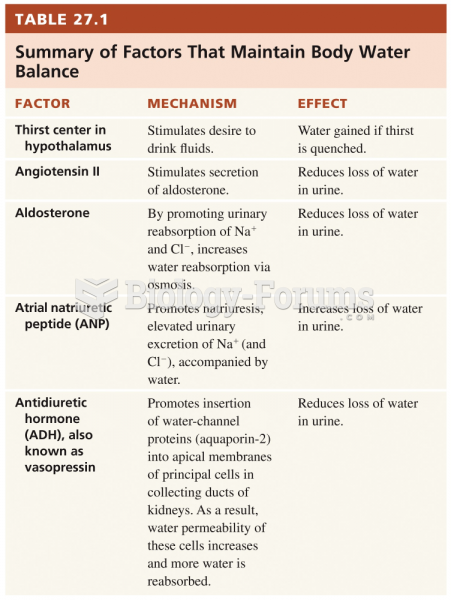|
|
|
Green tea is able to stop the scent of garlic or onion from causing bad breath.
There are 20 feet of blood vessels in each square inch of human skin.
Signs and symptoms that may signify an eye tumor include general blurred vision, bulging eye(s), double vision, a sensation of a foreign body in the eye(s), iris defects, limited ability to move the eyelid(s), limited ability to move the eye(s), pain or discomfort in or around the eyes or eyelids, red or pink eyes, white or cloud spots on the eye(s), colored spots on the eyelid(s), swelling around the eyes, swollen eyelid(s), and general vision loss.
There are actually 60 minerals, 16 vitamins, 12 essential amino acids, and three essential fatty acids that your body needs every day.
After a vasectomy, it takes about 12 ejaculations to clear out sperm that were already beyond the blocked area.







